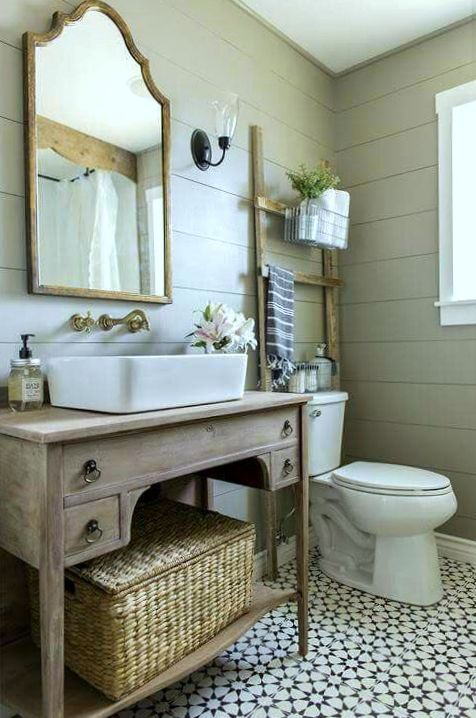Is Your Bathroom Staged to Impress Buyers?
Buy new towels
Paint with clear colors
Hide the ordinary toiletries
You know the drill. Ideally, there will be no “signs of life” when prospective buyers tour your home. I know it’s difficult when you live in the home and are human, but the more you can make your bathroom look like it’s part of the suite in a luxury resort, the better. That means only pretty stuff gets displayed, and grooming and medicinal essentials get tucked out of sight.To keep the bath hotel-spotless and discourage people on tour from using the fancy towels, I like to tie a decorative ribbon around the ones I've artfully arranged on rods. I know that some may find this practice hokey, but I want to be practical. I don't want people using them. If they want to wash their hands, they're on their own.
Replace non-white toilets and sinks
Most house hunters will think twice about making an offer on a house with green or pink toilets. And they want white sinks.Add bling and texture
For all the gleam they add, updated faucets give an excellent return on your investment. Consider new ones if yours are beyond polishing to newness.In a smaller bath, it's better if matches, including shower head and spout, door hinges, toilet paper holder, and towel rings. Changing out shower hardware is the tricky one because you'll probably need a plumber. The others are DIY projects. If you are staging a larger bathroom or a bath with some newer trends, mixed metals can be the way to go.
| People like hotel-style curved shower rods. |
Don't be incredible
The early days of over-the-top staging, where tea lights floated in tinted bath waters, and champagne flutes sat at the tub's edge, are over. People just shook their heads.Today's staging needs to be more sophisticated.
Don't burn candles for a showing.
| More than in any other room, good bathroom lighting is crucial. Photo: Traditional Home. |
Maintain the room
Once your bath is staged, the challenge will be keeping it tidy. Having a container of sanitizing wipes in the vanity is a given for quick sink, toilet, and counter cleanups.Except for the part about you having to be the room service person, you might even begin feeling like you live at a luxury hotel.
Plan to take Mr. Clean (Magic Eraser) into the shower with you. That's how I keep our glass shower doors and tile surround from getting dull, just by wiping walls as I rinse. Call me crazy, but the shine speaks for itself.
























